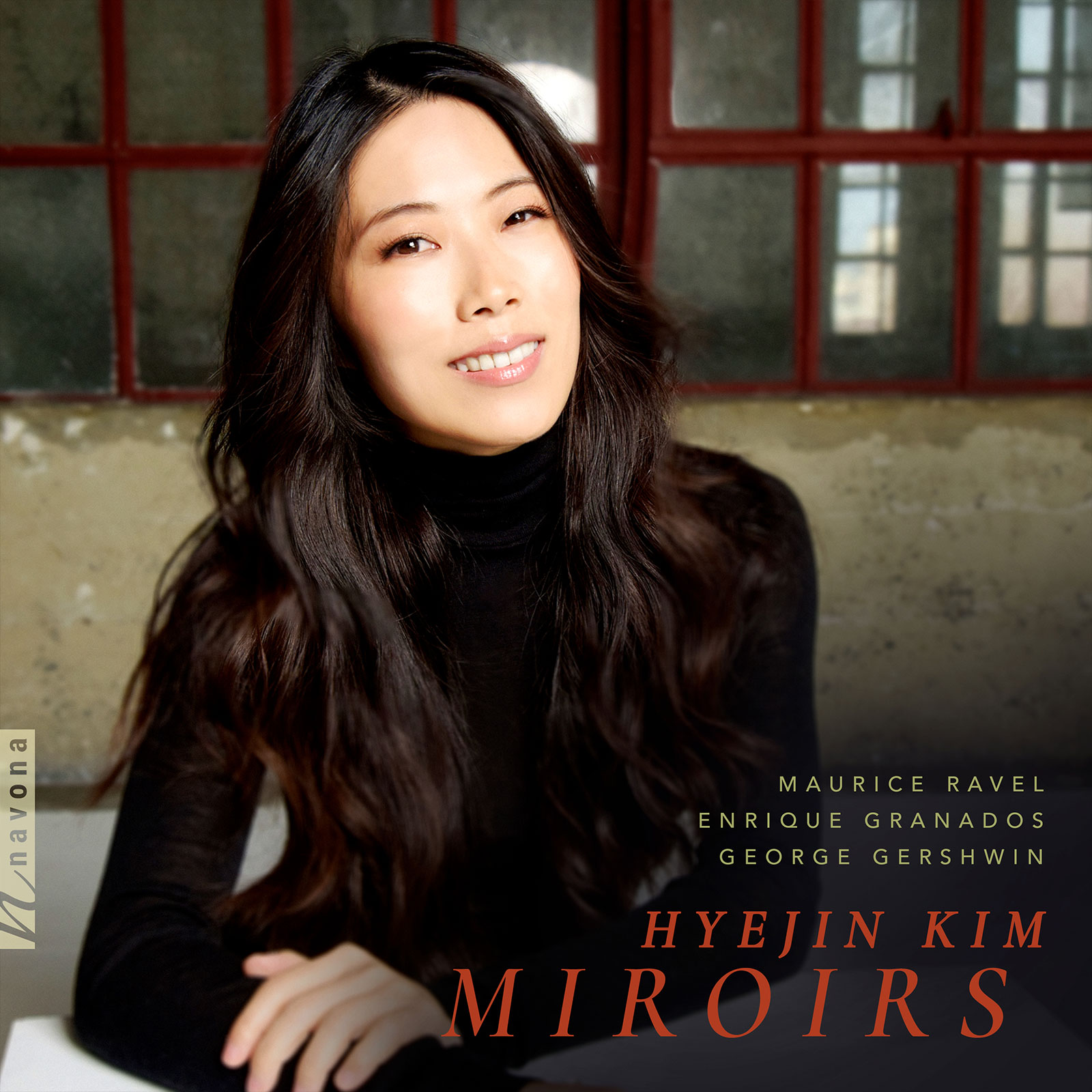Miroirs
HyeJin Kim piano
Maurice Ravel composer
Enrique Granados composer
George Gershwin composer
On her debut solo album, MIROIRS, pianist HyeJin Kim embarks on a journey of self-reflection through music. The solo-piano repertoire by Gershwin, Ravel, and Granados provides a deliberately intimate experience, in which Kim shares career-shaping works that helped define her as a musician—and as a person. Her delicacy, precision, and passion for the music come through in each piece, which as a whole crafts a narrative that interweaves the concepts of art, life, and belonging.
Listen
Stream/Buy
Choose your platform
Track Listing & Credits
| # | Title | Composer | Performer | |
|---|---|---|---|---|
| 01 | Miroirs M.43: I. Noctuelles | Maurice Ravel | HyeJin Kim, piano | 4:56 |
| 02 | Miroirs M.43: II. Oiseaux tristes | Maurice Ravel | HyeJin Kim, piano | 4:08 |
| 03 | Miroirs M.43: III. Une barque sur l’océan | Maurice Ravel | HyeJin Kim, piano | 8:03 |
| 04 | Miroirs M.43: IV. Alborada del gracioso | Maurice Ravel | HyeJin Kim, piano | 7:00 |
| 05 | Miroirs M.43: V. La vallée des cloches | Maurice Ravel | HyeJin Kim, piano | 6:15 |
| 06 | Goyescas, Op. 11: El Amor y la muerte | Enrique Granados | HyeJin Kim, piano | 13:23 |
| 07 | La Valse M.72 | Maurice Ravel | HyeJin Kim, piano | 12:31 |
| 08 | Goyescas, Op. 11: Quejas, o La Maja y el ruiseñor | Enrique Granados | HyeJin Kim, piano | 6:51 |
| 09 | Rhapsody in Blue | George Gershwin | HyeJin Kim, piano | 15:01 |
Recorded June 26-30, 2016 at the Herbert Zipper Recital Hall, Colburn School in Los Angeles CA
Recording Producer Philip Traugott www.philiptraugott.com
Recording, Mixing And Mastering Engineer Tom Lazarus www.classicsound.com
Venue Engineer Sergey Parfenov, Colburn School
Piano Technician Luke Tayler, Kathy Smith, Moritaka Kina
Photographer Shervin Lainez www.shervinfoto.com
Makeup Artist Tracy Raffelson
Hair Stylist Alex Henrichs
General Manager of Audio & Sessions Jan Košulič
Audio Director Lucas Paquette
Executive Producer Bob Lord
Executive A&R Sam Renshaw
A&R Director Brandon MacNeil
A&R Quinton Blue
VP, Design & Marketing Brett Picknell
Art Director Ryan Harrison
Design Edward A. Fleming
Publicity Patrick Niland, Sara Warner
Artist Information

HyeJin Kim
Pianist HyeJin Kim has been described as “passionate, indisputably masterful technique with colorful interpretations,” (Der Westen) and is recognized as one of South Korea’s top artists with a comprehensive career as soloist, chamber musician, recording artist, and educator. Born in Seoul, Kim trained at the prestigious Yewon Arts School and Seoul Arts High School, and received numerous awards at competitions including the Hong Kong International Piano Competition, DAAD Prize in Germany, Steinway & Sons Advancement Award Competition, and the Toronto International Piano Competition. Kim was the youngest prize winner of the 55th Ferruccio Busoni International Piano Competition. Kim recently made her Carnegie Hall debut and has performed as a soloist with the Korean Chamber Orchestra, Westchester Philharmonic, San Bernardino Symphony, and Buffalo Philharmonic where Kim’s performance “had the utmost delicacy…. with a terrific flourish. She threw herself into music with grace and fortitude.” (The Buffalo News)
Notes
MUSIC IS THE MIRROR OF LIFE. When music and life meet, art is created. The symbiotic moment delivers the highest expression of our personality. As one of many musicians who have lived a life in music, it has been my longstanding wish and dream to share my first solo album with music that has greatly inspired me to find my true self.
— HyeJin Kim

